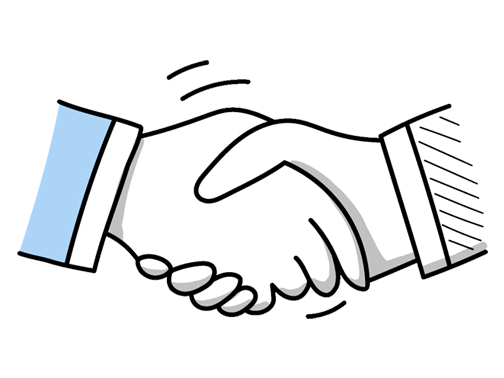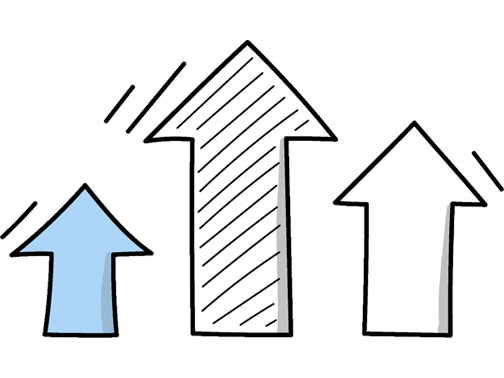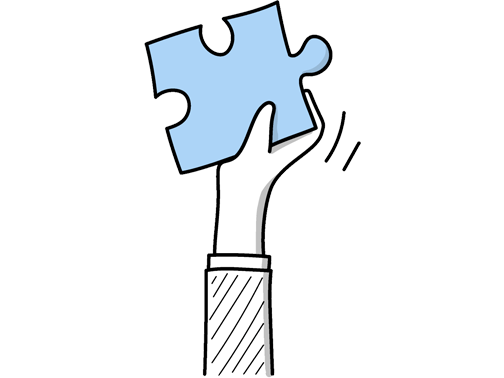Risk Management Analyst Interview Questions (2025 Guide)
Find out common Risk Management Analyst questions, how to answer, and tips for your next job interview
Practice Interviews Online - Identify your strengths and weakness in a realistic Risk Management Analyst mock interview, under 10 minutes
Practice Now »Risk Management Analyst Interview Questions
What they want to see is your ability to communicate clearly and work collaboratively despite disagreements. You should explain that you listen actively to understand others' views, stay professional and calm, and work together to find solutions based on objective data.
Example: When disagreements arise over risk assessments, I focus on listening carefully to understand each viewpoint. I find that digging into the data together helps clarify uncertainties. For example, in a previous project, we revisited the risk factors as a team and adjusted our approach based on fresh analysis. Keeping the conversation respectful and data-driven ensures we stay aligned on the goal, rather than personal opinions.
This question assesses your ability to communicate complex risk information effectively to decision-makers. In your answer, explain how you simplified technical data for senior management, focused on strategic impacts, and confidently addressed their questions.
Example: In my previous role, I prepared a risk report highlighting potential supply chain disruptions. Knowing senior management valued clear insights, I focused on key impacts and mitigation steps, avoiding technical jargon. During the presentation, I welcomed questions and addressed concerns calmly, which helped build confidence in our strategy. This approach ensured the leadership team felt informed and assured about our proactive risk handling.
What they want to know is if you understand and can apply quantitative methods to evaluate risk effectively. You should describe specific techniques you’ve used, like regression analysis or Monte Carlo simulations, give a real example of how you applied them to assess risk, and explain how you communicated your findings clearly to stakeholders.
Example: In my previous role, I regularly used statistical models and scenario analysis to evaluate potential risks. For example, I applied Monte Carlo simulations to forecast project uncertainties, helping the team make informed decisions. I’m comfortable breaking down complex data into clear insights, ensuring stakeholders understand the implications without getting lost in numbers. This approach has proven valuable in aligning risk assessments with business objectives.
This interview question helps assess your ability to recognize critical risks and take proactive, effective steps to manage them. You need to clearly describe the risk, explain how you analyzed it with the team, and show the concrete actions you took to reduce or eliminate the threat.
Example: In a previous role, I noticed a gap in our supplier data security that could have led to a breach. I conducted a thorough risk assessment, collaborating with IT to map out vulnerabilities. We implemented stricter access controls and regular audits, which significantly reduced potential exposure. This proactive approach prevented any incidents and strengthened overall data protection across the supply chain.
What they want to know is how you make complicated risk topics easy to understand and ensure everyone is on the same page. You should say you simplify technical details, ask clarifying questions to confirm understanding, and organize your points clearly and logically.
Example: When discussing complex risk issues, I focus on breaking down ideas into straightforward terms that everyone can grasp. I make sure to listen carefully and ask questions to confirm understanding. For example, in a previous role, I used visuals and real-world scenarios to explain risk models, which helped the team engage and respond confidently. Keeping communication clear and interactive helps ensure everyone is on the same page.
This interview question aims to assess your ability to incorporate risk assessment into business decisions to ensure long-term success. You need to explain how you identify potential risks, evaluate their impact, and align mitigation strategies with the company’s overall goals during strategic planning.
Example: Integrating risk management into strategic planning means spotting potential challenges early and aligning them with business goals. I work closely with teams to identify risks that could impact outcomes and build in flexible responses. For example, when a project’s market conditions shifted, we adjusted timelines and resources to mitigate impact. This approach helps ensure strategies are not just ambitious, but also resilient.
Employers ask this question to see how you communicate risk and influence others to act proactively, which is crucial in risk management. You need to clearly describe a situation with a significant risk, explain how you used data or analysis to prove its seriousness, and show the steps you took to convince others to respond appropriately.
Example: In a previous role, I noticed a data security gap that others hadn’t prioritized. I gathered relevant breach statistics and ran scenario analyses to highlight potential impact. Presenting this to the team, I connected the risk to both financial loss and reputational damage. This helped shift perspectives, leading to immediate measures that strengthened our security protocols and prevented possible issues down the line.
Hiring managers ask this to see how you approach complicated risk scenarios and use analytical skills to protect the organization. You need to clearly explain the complex situation, the steps you took to assess and manage the risks, and the successful results your actions achieved.
Example: In a previous role, I identified inconsistencies in data reporting that could have led to inaccurate risk assessments. I collaborated with IT to refine data collection processes and introduced regular audits. This not only improved data accuracy but also enhanced our risk prediction models, enabling the team to make more informed decisions and ultimately reducing potential financial exposure.
This question tests your ability to stay informed about regulatory environments and adapt risk strategies accordingly. You need to explain how you monitor updates from regulators like the FCA or PRA, assess their impact on compliance and policies, and communicate necessary changes to your team effectively.
Example: Regulatory changes often require us to reassess our risk frameworks to stay compliant and effective. I usually start by closely monitoring updates and interpreting how they influence our existing policies. Then, I work on adjusting strategies accordingly, ensuring these changes are clear and actionable for the team. For example, when GDPR regulations evolved, we updated data handling protocols and trained staff to mitigate compliance risks while maintaining operational flow.
Interviewers ask this question to see if you can maintain focus and efficiency despite routine work. You need to say that you stay motivated by setting small goals and reminding yourself of the bigger impact your work has on preventing risks.
Example: When tasks feel repetitive, I focus on the bigger picture—how each step contributes to reducing risks and protecting the organisation. Keeping that end goal in mind helps me stay engaged. I also like breaking down tasks into smaller parts or setting mini-goals to maintain a sense of progress. Occasionally, I switch between different responsibilities to keep things fresh and stay sharp.
Interviewers ask this to see how flexible and resilient you are in the face of unexpected challenges. You need to explain the situation, the change you faced, and how you adjusted your approach to successfully move the project forward.
Example: In a previous project, midway through, regulatory changes altered our risk assessment criteria. I quickly revisited our data models and engaged with the compliance team to understand the new requirements. By adjusting our approach promptly, we ensured the project stayed on track without compromising accuracy. It reinforced the importance of staying flexible and communicative when unexpected shifts occur.
Questions like this assess your understanding of how risk management supports the overall framework of corporate governance by ensuring that risks are identified, assessed, and mitigated to protect the company's assets and reputation. You need to explain that risk management is integral to corporate governance because it helps the board make informed decisions and maintain accountability.
Example: Risk management is a key part of corporate governance because it helps organisations identify and address potential challenges before they impact business goals. It supports informed decision-making and ensures transparency with stakeholders. For example, by assessing financial risks early, a company can avoid costly surprises and maintain trust, which ultimately strengthens overall governance and long-term stability.
Questions like this assess your ability to respond effectively when risks occur, showing your problem-solving and decision-making skills under pressure. You need to say you quickly assess the impact, implement corrective actions to minimize damage, and develop strategies to prevent recurrence.
Example: When a risk has already materialized, I focus first on containing any immediate impact to prevent further damage. Then, I analyse what went wrong to understand the root cause. From there, I work with the relevant teams to put corrective actions in place and adjust controls to stop it happening again. For example, after a recent data breach, we quickly isolated affected systems and reviewed our security policies to strengthen our defenses.
Questions like this assess your ability to maintain composure and apply risk management skills effectively under stress. You need to briefly describe the high-pressure scenario, explain the steps you took to assess and mitigate the risk, and share the positive outcome or lesson learned.
Example: In a previous role, we faced a sudden regulatory change just days before reporting deadlines. I quickly assessed the impact, coordinated with compliance and legal teams to adjust processes, and communicated updates clearly to stakeholders. This ensured we met requirements without penalties. It reinforced how staying calm and focused under pressure, while collaborating closely, is key to managing unexpected risks effectively.
This question helps interviewers see if you can ensure a risk management strategy truly supports business goals and adapts over time. You need to explain how you check alignment with organizational objectives, measure outcomes with relevant KPIs, and use feedback to improve the strategy continuously.
Example: To evaluate a risk management strategy, I look at how well it supports the organisation’s goals and whether the controls put in place actually reduce risks in practice. I also gather feedback from stakeholders and monitor any changes in risk levels over time. For example, after introducing new controls, checking if incidents have decreased helps show if the approach is working or needs adjusting.
This interview question assesses your awareness of evolving risk management practices and their relevance to today’s business environment. You need to mention key trends like AI and data analytics in predicting risks and explain how real-time risk monitoring enhances organizational decision-making.
Example: One trend I find particularly impactful is the growing use of data analytics and AI to identify risks more proactively. This allows organisations to anticipate challenges rather than just react. Also, with increasing regulatory demands, embedding compliance into daily operations has become crucial. Adapting to these shifts means continually updating risk frameworks to stay ahead, ensuring the business remains resilient amid evolving market and regulatory landscapes.
What they want to understand is how you ensure clear, efficient information flow to minimize misunderstandings and manage risks effectively. You need to say you use regular check-ins and open channels to encourage transparency and teamwork.
Example: I focus on creating an open environment where everyone feels comfortable sharing ideas and concerns. Regular check-ins and clear updates help keep the team aligned. I also encourage active listening to understand different perspectives, which often leads to better solutions. For example, in my last role, brief daily stand-ups helped us identify risks early and adjust quickly, improving overall team responsiveness.
Questions like this assess your ability to quickly evaluate and manage risks under pressure. You need to explain that you prioritize based on factors like impact, likelihood, and urgency to address the most critical risks first.
Example: When several risks come up at once, I first assess their potential impact and likelihood. I focus on those that could cause the most significant disruption or financial loss. For example, if a compliance issue risks regulatory fines, that takes priority over a minor operational glitch. This way, I’m addressing what matters most while keeping an eye on less urgent concerns to manage them before they escalate.
This question evaluates your understanding of a structured approach to identifying, evaluating, and communicating financial risks. You should explain how you analyze market trends to identify risks, use models like VaR to quantify them, and create reports to keep stakeholders informed.
Example: When assessing financial risks, I start by thoroughly examining all potential vulnerabilities within the portfolio or process. I use both qualitative insights and quantitative tools, like stress testing and scenario analysis, to gauge their impact. Regular monitoring helps me track any changes, and I make sure to communicate findings clearly with relevant teams to support informed decisions. For example, in a previous role, this approach helped prevent significant exposure during market shifts.
What they want to understand is your awareness of real-world challenges and your ability to learn from mistakes to improve processes. You need to briefly describe a specific failure, highlight the key lessons learned, and explain how those lessons can prevent future risks.
Example: Certainly. A notable example is the 2020 Wirecard scandal, where failures in oversight allowed significant fraud to go undetected. This taught the industry the critical importance of thorough due diligence and stronger regulatory frameworks. It also highlighted how vital transparent communication is between auditors, regulators, and stakeholders to prevent such risks from escalating unchecked.
Questions like this assess your commitment to continuous learning and your ability to adapt to evolving risks. You need to say that you regularly follow industry news, attend webinars or conferences, and engage with professional networks to stay informed about the latest risk management strategies.
Example: I stay current by regularly reading reports from the Financial Conduct Authority and following industry news through sources like the Risk.net newsletter. I also engage with professional groups on LinkedIn and attend webinars or local events when possible, which provides valuable insights from peers. This combination helps me understand emerging risks and evolving best practices in a practical, real-world context.
This interview question helps the employer assess your practical knowledge of key risk management tools and your ability to apply them effectively in real situations. You need to mention specific software you’ve used, describe how you leveraged it to identify or reduce risks, and highlight your willingness and ability to learn new tools quickly.
Example: I’ve worked extensively with tools like RiskWatch and LogicManager to identify and assess potential risks. In my previous role, I used these platforms to monitor compliance and generate detailed risk reports that informed executive decisions. While I’m comfortable with these systems, I’m also quick to pick up new software, which helps me stay adaptable as technology and organisational needs evolve.
Interviewers ask this to see if you can simplify complex information and ensure everyone understands potential risks. You should say you use clear, jargon-free language and focus on actionable insights to make the information accessible and relevant.
Example: When communicating risk assessments to non-technical stakeholders, I focus on clarity and relevance. I break down complex terms into everyday language and use relatable examples to illustrate potential impacts. For example, instead of technical jargon, I might compare data risks to everyday situations like securing personal finances. This approach ensures the message resonates and supports informed decision-making without overwhelming the audience.
Hiring managers ask this question to see if you can accept constructive criticism and continuously improve your work. You should say that you welcome feedback, carefully review it to understand different perspectives, and use it to enhance the accuracy and clarity of your risk reports.
Example: I view feedback as a valuable chance to refine my work. When I receive comments on risk reports, I listen carefully to understand the perspective and then assess how to incorporate the suggestions practically. For example, in a previous role, feedback helped me clarify risk indicators, which made the reports more actionable for stakeholders. It’s important to stay open and responsive, ensuring the final output truly supports decision-making.
What they want to know is that you understand key risk management regulations and can actively maintain compliance through monitoring and adaptation. You need to mention specific standards like FCA guidelines or GDPR, describe how you conduct regular audits or reviews, and explain how you update policies to address new regulatory changes.
Example: To ensure compliance, I stay current with relevant standards and regulations, regularly reviewing policies and procedures. I use risk assessments and audits to identify any gaps early on and work collaboratively to address them. When regulations change, I adapt quickly, updating processes and training the team to maintain alignment. For example, during GDPR updates, I coordinated cross-team efforts to revise data handling practices smoothly.
Ace your next Risk Management Analyst interview with even more questions and answers
Common Interview Questions To Expect
The interviewer is looking for your motivation, passion, and understanding of the role. You can answer by discussing your skills, experience, interest in the industry, or alignment with the company's values.
Example: I am interested in this role because I have a strong background in analyzing risks and developing strategies to mitigate them. I am passionate about helping organizations make informed decisions to protect their assets and achieve their goals. I believe my skills and experience align well with the responsibilities of a Risk Management Analyst in this company.
The interviewer is looking for you to highlight your key skills, abilities, and qualities that make you a strong candidate for the role. Be sure to provide specific examples to support your strengths.
Example: I would say my biggest strengths are my attention to detail, analytical skills, and ability to think critically. For example, in my previous role, I was able to identify potential risks and develop strategies to mitigate them effectively. I believe these strengths will be valuable in a role as a Risk Management Analyst.
The interviewer is looking for your long-term career goals, ambition, and commitment to the company. Answers should demonstrate a desire for growth and development within the organization.
Example: In five years, I see myself taking on more leadership responsibilities within the risk management team, possibly as a senior analyst or manager. I am committed to continuously improving my skills and knowledge in this field to contribute to the company's success. Ultimately, I aim to become a valuable asset to the organization and make a positive impact on its risk management strategies.
Candidates can answer by stating a specific salary range, mentioning their flexibility, or asking about the company's budget. Interviewers are looking for candidates who are realistic, confident, and have done their research on industry standards.
Example: I'm looking for a salary in the range of £40,000 to £50,000, but I'm open to negotiation based on the overall compensation package. I've done some research on industry standards and believe this range is competitive for a Risk Management Analyst in the UK. Can you provide any insight into the company's budget for this position?
Interviewees can answer by acknowledging a mistake, explaining how they rectified it, and highlighting lessons learned. Interviewers are looking for accountability, problem-solving skills, and ability to learn from mistakes.
Example: Yes, I once made a mistake in a risk assessment report by overlooking a key data point. I immediately notified my supervisor, corrected the error, and implemented a double-check system to prevent similar mistakes in the future. It taught me the importance of attention to detail and the value of transparency in communication.
Company Research Tips
The company's official website is a goldmine of information. Look for details about the company's history, mission, vision, and values. Pay special attention to the 'About Us', 'Our Team', and 'News' sections. These can provide insights into the company culture, key personnel, and recent developments. For a Risk Management Analyst role, understanding the company's approach to risk and any recent challenges they've faced can be particularly useful.
Tip: Don't just skim through the website. Take notes and think about how the information you find relates to the role you're applying for.
LinkedIn can provide valuable insights into the company's culture, employee profiles, and recent updates. Look at the profiles of employees in similar roles or the department you're applying to. This can give you an idea of the skills and experience the company values. Also, check if the company has posted any recent updates about projects or achievements, which can be good talking points during the interview.
Tip: Use LinkedIn's 'Alumni' tool to find people who have worked at the company and reach out to them for insights.
Understanding the industry's current trends and challenges can help you demonstrate your knowledge and enthusiasm for the role. Look for news articles, reports, and analyses related to the company's industry. For a Risk Management Analyst role, focus on recent incidents or developments related to risk management in the industry.
Tip: Use Google Alerts to stay updated on the latest news about the company and the industry.
Websites like Glassdoor provide reviews from current and former employees, which can give you insights into the company culture, management style, and potential challenges. However, remember that these reviews represent individual experiences and may not reflect the overall reality.
Tip: Look for patterns in the reviews rather than focusing on individual positive or negative comments.
If the company is publicly traded, you can find its financial reports online. These can provide insights into the company's financial health, strategic priorities, and potential risks. For a Risk Management Analyst role, understanding the company's financial situation and risk profile is crucial.
Tip: Focus on the 'Management Discussion and Analysis' section of the annual report, which often discusses risks and uncertainties.
What to wear to an Risk Management Analyst interview
- Dark-colored business suit
- White or light-colored dress shirt
- Conservative tie
- Polished dress shoes
- Minimal and professional accessories
- Neat and professional hairstyle
- Light and professional makeup for women
- Clean and trimmed nails
- Avoid flashy jewelry
- Wear subtle perfume or cologne





